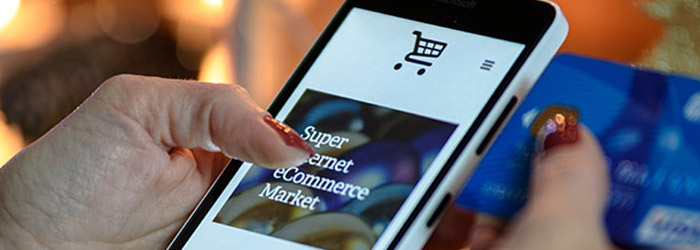
Only a few years ago, shopping online meant sitting in front of a computer and browsing through endless websites for items of interest. That model has now been completely replaced, as Americans now use smartphones and other mobile devices to accomplish their online and in-store shopping. At least 65% of American adults are in possession of a smartphone, and that percentage is even considerably higher among younger adults.
Moreover, a whopping 84% of shoppers in brick-and-mortar stores do comparison-shopping and search for extra information about products of interest by using their phones in-store. More than 50% of all millennials, who represent the most electronically-connected age group, have downloaded at least one mobile shopping app.
From these statistics, it’s more than a little obvious that many of today’s shoppers can most accurately be characterized as mobile shoppers. In this discussion, we’ll identify some of the ways that smartphones have caused this shift in the approach to shopping, and why they will continue to do so.

MOBILE RETAILER APPS
Moreover, a whopping 84% of shoppers in brick-and-mortar stores do comparison-shopping and search for extra information about products of interest by using their phones in-store. More than 50% of all millennials, who represent the most electronically-connected age group, have downloaded at least one mobile shopping app.
From these statistics, it’s more than a little obvious that many of today’s shoppers can most accurately be characterized as mobile shoppers. In this discussion, we’ll identify some of the ways that smartphones have caused this shift in the approach to shopping, and why they will continue to do so.

MOBILE ADS AND BEACONS
Beacons are small, inexpensive Bluetooth devices positioned strategically on the floor of a retail establishment, which transmit product information as well as sales notifications whenever shoppers come within range of their transmissions. Mobile ads can be displayed using these beacons, and those ads can be customized to an individual shopper’s personal preferences. Some stores are also setup to use beacons for immediate processing of payments, which avoids the necessity of having shoppers stand in long checkout lines.

PUSH-BASED APPS
The first mobile apps available were considered to be pull-based, i.e. apps which were only activated once a user requested information, searched for an item, or transferred products into a shopping cart. The newest mobile apps are push-based, anticipating specific wants and needs of buyers, and then providing useful information relative to those preferences. For instance, when a mobile app becomes aware of a user’s interest in a specific brand, it can automatically transmit pricing information or other data without being prompted. The trend for newer apps is entirely in this direction, and as Dries Buytaert, the founder of Drupal Web Publishing recently stated, “In the future, content, products and services will find you, rather than you having to find them.”

MOBILE PAYMENTS
There are already some apps available which allow payments to be transacted via mobile device, for instance Google Wallet and Apple Pay. While these aren’t exactly commonplace as yet, many retailers have already had to upgrade their POS systems to accommodate new credit cards with the chips that replace magnetic stripes. Since these new systems already have the capability of accepting credit card data, gift cards, and store loyalty cards from mobile apps, a great deal of new functionality has already been included in modern POS systems. When mobile payment functionality becomes widespread, shoppers won’t really even have to take credit cards with them on the next shopping trip, nor will they have to stand in long lines to pay.

THE NEW IN-STORE ADVISOR
An amazing 82% of in-store shoppers confirm that they make use of their smartphones while shopping to find out all the relevant information about a given product before buying. Not only that, but approximately 25% of shoppers claim that they have actually changed their minds about purchasing a product as they were in the checkout line, because they looked up details about a product on their smartphone and decided against purchasing.

AMAZON GO
There is a brand new shopping experience available to people in Seattle, WA, which allows customers to purchase various kinds of snack foods, as well as ready-to-eat breakfast, lunch, and dinner entrees – without ever getting in a checkout line, or putting anything in a shopping cart! It’s referred to as ‘Just Walk Out Shopping’ by its founders, and that’s exactly what happens when you visit the store. All you need to buy a delicious meal or snack is an Amazon account, the free Amazon app, and a smartphone which is supported. The whole thing works by sensing when food products are taken from or returned to their shelves, tracked in a virtual cart, and later billed to your account. Currently in use only by Amazon employees in beta mode, Amazon Go will be available to the general public early in 2017, and it’s easy to predict that some early success would likely spawn a whole legion of similar shopping centers.
The Emerging Role of Smartphones in Shopping
From these six points, it’s easy to see that smartphones are playing a more critical role in the shopping experience for the vast majority of modern consumers. Retailers who ignore this emerging cellphone dominance do so at their peril, and are increasingly likely to be distanced by competitors who recognize the changing nature of shopping. But recognition of the shift isn’t enough — as with all information, possession of the facts is only part of the game, and it’s really acting on those facts that will make a difference for today’s retailers.